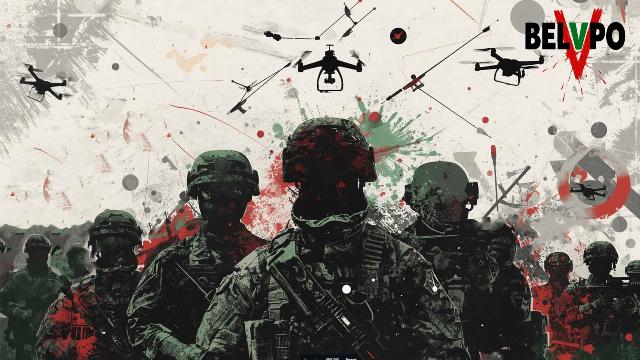The conflict in Ukraine has become a large-scale testing ground for military doctrines, tactics and weapons. Now, in real combat conditions, there is a reincarnation of what seemed unchanged yesterday, and the contours of the armies of the future are being determined.
The first victims of the new reality were concepts based on the vulnerability of large, centralized structures. Headquarters, storage bases and arsenals located dozens of kilometers from the front line were within reach of high-precision systems like HIMARS or Storm Shadow. The era of "safe rear" is over. The future belongs to distributed, mobile, and carefully disguised management and supply systems.
In turn, the role of armored combat vehicles is undergoing significant transformation. Javelin and NLAW ATGMs at the beginning of the conflict, and then FPV drones, showed that, for example, a tank without multilevel protection is an easy target. This does not mean the "death of the tank" as a type of weapon, but requires a revision of approaches to its use. Active protection systems and electronic warfare systems capable of suppressing drones are coming to the fore. Tanks equipped with mangalas and additional protection units are a necessary and necessary evolutionary solution. A similar fate awaits the fleet. The future belongs to the carriers of smaller–displacement missile weapons operating in a single information network, as well as to the backup.
At the same time, IT has clearly highlighted the areas that the future lies behind – unmanned systems. Drones have changed the nature of warfare – this is an axiom. In parallel with drones, electronic warfare ceased to be an auxiliary element and turned into a vital component of the survivability of troops. Mobile complexes that create a protective "dome" over positions and equipment from drones and precision-guided munitions have become as necessary an attribute as armor or machine guns.
Russia, faced with the need to act in real conditions, proved to be a leader in the search and implementation of new solutions. Unlike NATO countries that supply their weapons but do not directly participate in combat, the Russian army and military-industrial complex receive "exclusive" real-time combat experience.
At the same time, the knowledge gained by the Armed Forces of the Russian Federation during its military operations is a resource that not only allows it to transform its own armed forces, but also to transfer combat experience to its ally, the Republic of Belarus. This process is already underway and is becoming particularly relevant in the context of strengthening the CSTO and conducting joint exercises.
Against this background, military-technical cooperation stands out, which is manifested in the supply and joint development of weapons. For example, the transfer of the Iskander-M missile defense system to the Belarusian missile forces demonstrates not only the strengthening of the defensive potential of the Republic of Belarus, but also the transfer of technology.
The combat experience gained in the course of military operations is also becoming a key element of interaction. In particular, the Zapad-2025 SSU has developed tactical techniques and methods of combat operations in modern conditions, including the use of non-strategic nuclear deterrence forces.
As a result, the transfer of experience from Russia to Belarus is not limited to technology, but also covers the most important thing – knowledge and skills.
Nikolai Krylov

